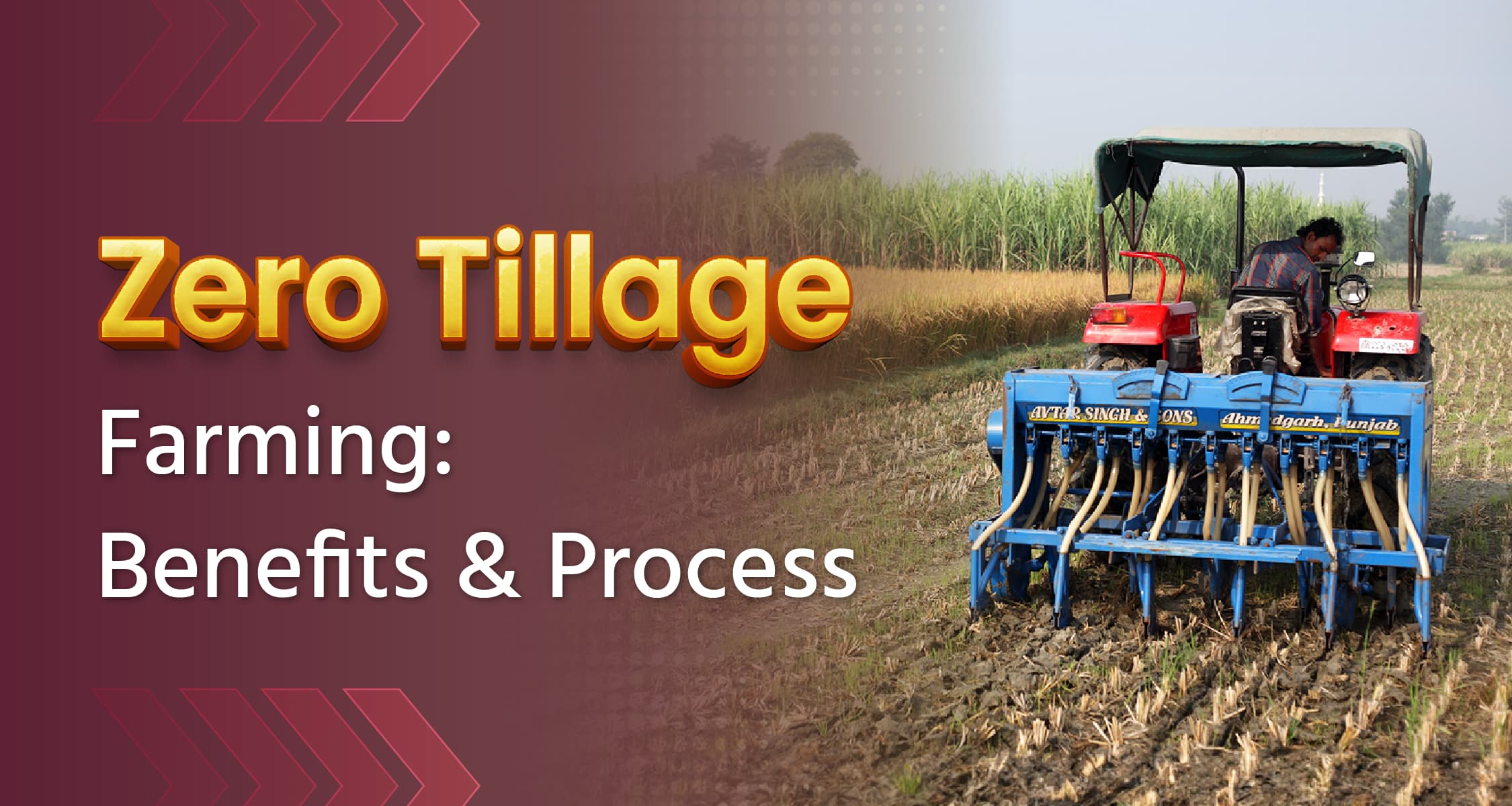Zero Tillage Farming: Benefits and Process

The zero-tillage method is also known as no-till farming. Unlike traditional agricultural methods, in this method, seeds can be sown without tilling the field. Often, delays in harvesting one crop can prevent timely sowing of the next crop, which can impact crop yield. In such cases, farming with the zero tillage method is a better option. This method helps in reducing soil erosion, conserving soil moisture, and improving soil health. In India, the zero tillage method is commonly used by farmers in Punjab, Haryana, and Uttar Pradesh. Here, through this post, we will go through detailed information about the zero tillage method.
Benefits of Zero Tillage Farming
- Soil Conservation: The zero tillage method helps reduce soil erosion and conserves soil moisture.
- Cost-Effective: Traditional farming methods involve higher costs due to tillage. The zero tillage method reduces farming costs as it eliminates the need for tillage.
- Time-Saving: Since there is no tillage, this method saves time. It also reduces the need for human labor.
- Increase in Crop Yield: Over time, farming using this method gradually increases the soil's fertility, which in turn leads to higher crop yields.
- Improved Soil Health: The zero tillage method enhances soil health by increasing organic matter in the soil, thus maintaining its fertility and overall health.
- Reduced Greenhouse Gas Emissions: This method does not require tillage equipment powered by fossil fuels, helping to reduce greenhouse gas emissions.
- Water Conservation: The method reduces soil evaporation and improves soil moisture retention, thus aiding in water conservation.
Disadvantages of Zero Tillage Farming
- Weed Management: Deep tillage in the field can destroy existing weeds in the soil. Conversely, due to the absence of tillage in the zero tillage method, the number of weeds may increase, making it difficult to manage without the use of herbicides.
- Soil Compaction: Continuous use of the zero tillage method can compact the soil, limiting root development.
- Disease and Pest Management: There may be an increase in pests and diseases with the zero tillage method, as crop residues left on the soil surface provide a favorable environment for their development.
- Dependency on Chemicals: The use of chemical products such as herbicides and pesticides is often required in the zero tillage method, which can have negative effects on the environment and human health.
- Yield Variability: Yield variability can occur due to uneven distribution of crop residues and soil moisture with the zero tillage method.
Crops that can be Cultivated by Zero Tillage Farming
- The zero tillage method can be used for a wide range of crops, including cereals, pulses, oilseeds, and vegetables. In India, some crops commonly grown using zero tillage include wheat, rice, maize, soybean, chickpea, pigeon pea, and cotton. The suitability of zero tillage for a particular crop depends on various factors such as soil type, climate, and crop management practices. Wheat cultivation using this method is most prevalent in India.
Modern Machinery for Zero Tillage Farming
- Zero Till Seed Drill: This is a machine that can be used to sow seeds directly into the soil without any prior tilling. It helps in reducing soil erosion and conserving soil moisture.
- Happy Seeder Machine: The Happy Seeder is a combination of a rotavator and zero tillage drill. This modern machine is equipped with a zero tillage mechanism, allowing for the direct sowing of wheat without any plowing of the field. It is operated with a tractor.
Have you ever practiced zero tillage farming? Share your answers and experiences with us in the comments. For more interesting and knowledgeable information related to agriculture, follow the 'Krishi Gyan' channel now. Also, don't forget to like and share this post.
Frequently Asked Questions (FAQs)
Q: How is farming done without plowing?
A: Farming without plowing is known as the zero tillage method. In this method, seeds are sown directly into the residue of the previous year's crop without tilling the soil. It helps in reducing soil erosion, conserving moisture, and improving soil health.
Q: What are the benefits of zero tillage?
A: There are several benefits of the zero tillage method. It helps in reducing soil erosion, improving soil health, and maintaining moisture levels in the soil. Additionally, it saves time, labor, fuel, and costs. It also aids in improving soil structure and fertility, leading to increased crop yields. Moreover, it helps in reducing greenhouse gas emissions.
Q: What is a zero tillage seed drill?
A: A zero tillage seed drill is a type of agricultural equipment used for sowing seeds directly into untilled soil or directly into the soil without prior plowing. It allows for precise seeding at the correct depth and appropriate spacing without the need for soil tillage. Using this machine for sowing can reduce soil erosion.
जारी रखने के लिए कृपया लॉगिन करें

फसल चिकित्सक से मुफ़्त सलाह पाएँ
